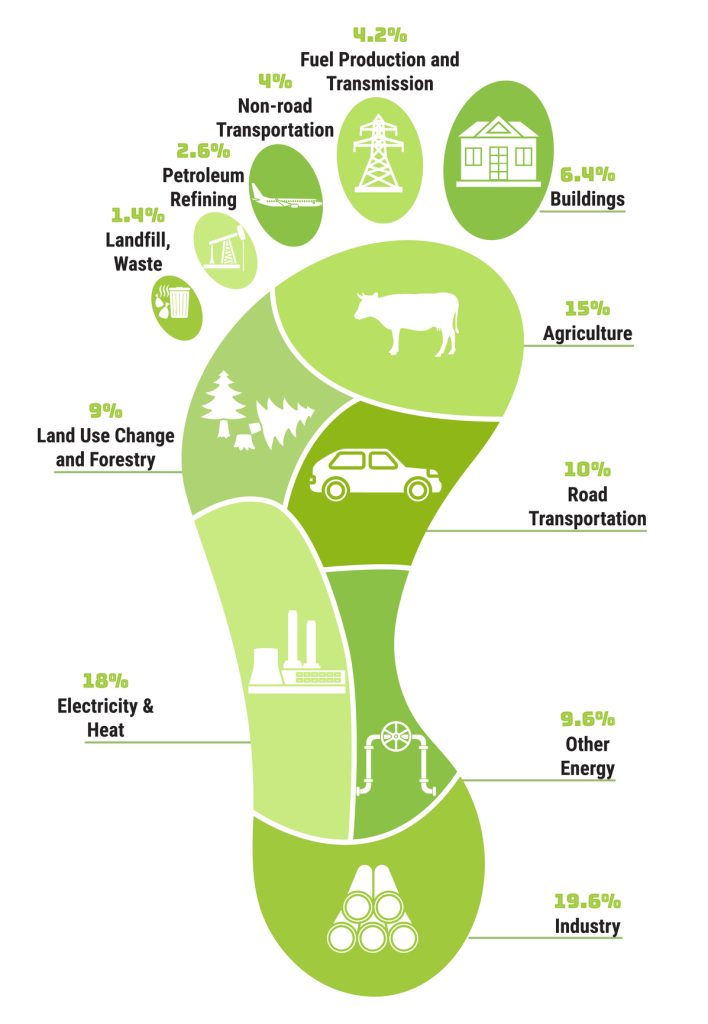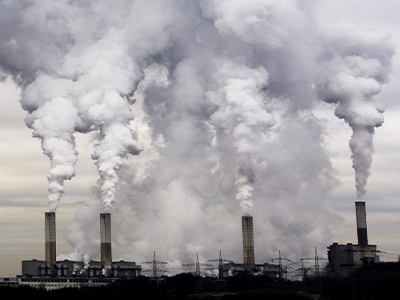In 2003, oil and gas company British Petroleum (BP) attempted to shift the burden of action around climate change from fossil fuel companies to consumers with an ad campaign that asked people on the street about their “carbon footprint.” Since then, the term has become popular shorthand for the amount of carbon (usually in tons) being emitted by an individual activity or an organization.
Although the carbon footprint concept was popularized in the early 2000s, it can trace its roots to the older idea of ecological footprint, another indicator of our impact on the Earth. The more precise concept of the carbon footprint was invented in the early 1990s by ecologist William Rees and regional planner Mathis Wackernagel at the University of British Columbia.
What is Carbon Footprint?
According to the World Health Organization (WHO), a carbon footprint is a measure of the impact our activities have on the amount of carbon dioxide (CO2) produced through the burning of fossil fuels and is expressed as a weight of CO2 emissions produced in tons.
Carbon footprints also estimate the total amount of greenhouse gases emitted during the production, processing, and retailing of consumer goods. The aim of measuring carbon footprints is to identify major sources of emissions in supply chains and inform relevant stakeholders so that actions can be taken to reduce emissions.
The major contributors to carbon footprints are food, consumption, transportation, and household energy. Food is a major contributor to carbon footprints. Usually, the bulk of an individual’s carbon footprint will come from transportation, housing, and food.

Greenhouse Gas
In addition to CO2, carbon footprints can also encompass other greenhouse gases (GHG), many of which are carbon-containing. Examples include methane, nitrous oxide, and chlorofluorocarbons (CFCs). Greenhouse gases can be emitted through the burning of fossil fuels, land clearance, production and consumption of food, manufactured goods, materials, wood, roads, buildings, transportation, and other services.
Greenhouse gases trap heat in the atmosphere through the “greenhouse effect” — they absorb and re-emit heat, thereby keeping the planet’s atmosphere warmer. The three main causes of the increase in greenhouse gases observed over the past 250 years have been fossil fuels, land use, and agriculture.
Sources of Greenhouse Gas Emissions
Greenhouse gases are emitted by both natural and human sources. Natural sources include decomposition, ocean release, and respiration. Human sources come from activities like cement production and deforestation as well as the burning of fossil fuels like coal, oil, and natural gas. The following are all major contributors to GHG emissions:
- Energy supply: 34%
- Other industries (fashion, food, retail, etc.): 24%
- Agriculture, forestry, and land use: 22%
- Transport: 15% to 20%
- Buildings: 5%
Main Components of Greenhouse Gases
The main gases responsible for climate change and global warming caused by the greenhouse effect are:
- Carbon dioxide (CO2)
- Methane (CH4)
- Nitrous oxide (N2O)
- Fluorinated gases – hydrofluorocarbons (CFCs) and perfluorocarbons (PFCs)
- Hydrochlorofluorocarbons (HCFCs)
- Sulfur hexafluoride (SF6)
- Nitrogen trifluoride (NF3)
Volume of GHG Emissions by Industry Sector
- Energy (Electricity and Heating) – 15.83 billion tons
- Transport – 8.43 billion tons
- Manufacturing and construction – 6.3 billion tons
- Agriculture – 5.79 billion tons
- Food retail – 3.1 billion tons
- Fashion – 2.1 billion tons
- Technology – 1.02 billion tons
Top Producers of CO2 Emissions in 2022
China remains the world’s largest greenhouse gas emitter with emissions greater than the United States and European Union combined.
- China – more than 10,065 million tons
- United States – 5,416 million tons
- India – 2,654 million tons
- Russia – 1,711 million tons
- Japan – 1,162 million tons
- Germany – 759 million tons
- Iran – 720 million tons
Reducing GHG Emissions through Corporate Social Responsibility
Manufacturing industries can lower their carbon footprint as part of a corporate social responsibility (CSR) strategy. The aim is to identify significant sources of emissions in supply chains and inform relevant stakeholders so that actions can be taken to reduce emissions.
Below are some of the many tactics companies can implement to reduce overall GHG emissions:
- Monitor energy use to know which part(s) of a business use the most energy
- Reduce energy usage
- Reduce water usage
- Reward the green commute
- Review logistics
- Switch to green energy (generate electricity without emissions)
- Recycle
- Reduce packaging
- Travel without making greenhouse gases
- Take carbon dioxide out of the air (carbon removal)
Conclusion
Greenhouse gases represent a broad group of compounds that trap heat in Earth’s atmosphere. These gases come from direct sources, such as factory emissions, and indirect sources, such as deforestation. Many greenhouse gases are carbon-based and contribute to an individual’s or organization’s carbon footprint.
As companies become more aware of their own carbon footprint, they can implement several strategies to reduce greenhouse gas emissions. In our next article, we will take a closer look at carbon-based greenhouse gases and several important ways in which industries and individuals can reduce their overall carbon footprint.





